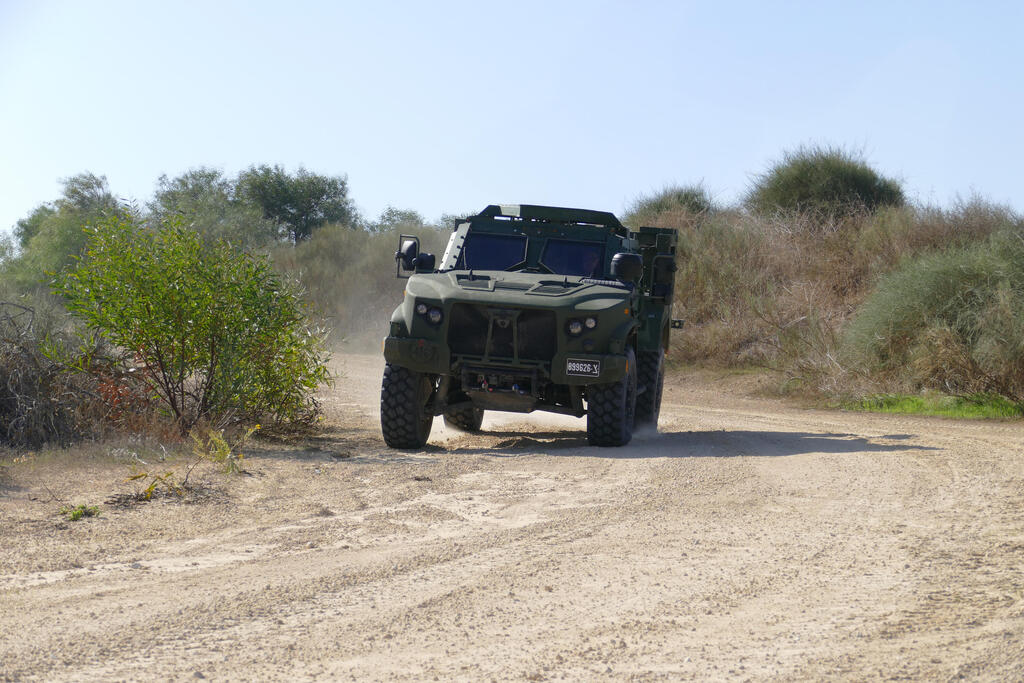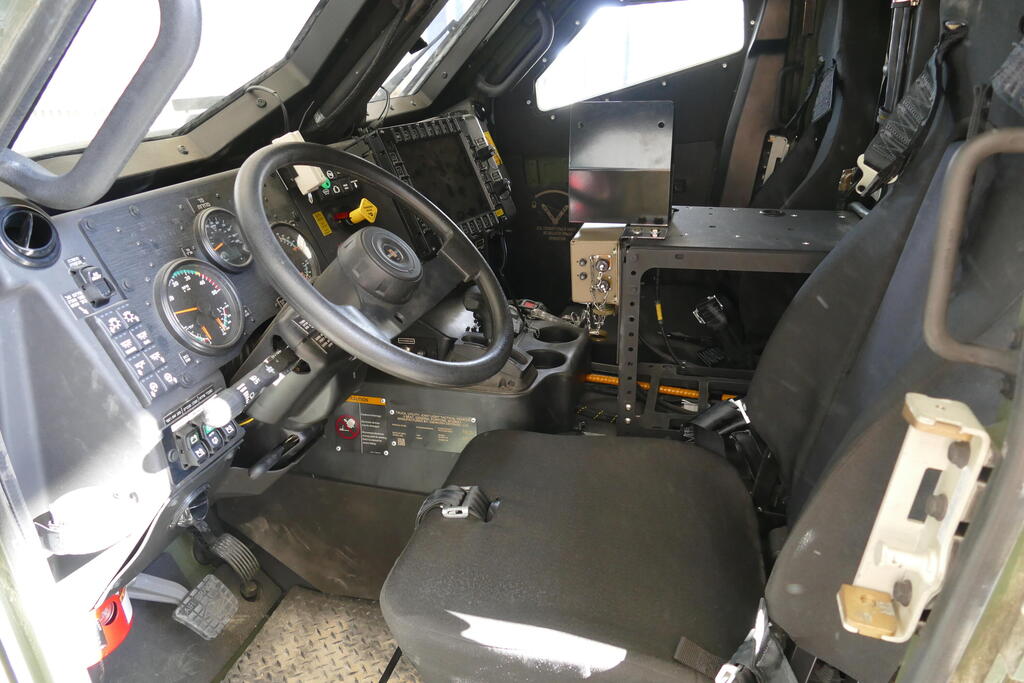Ben Gurion Airport, Israel — Weeks after the October 7 attacks, a steady stream of military equipment continues to arrive in Israel as part of an international resupply effort to support the war effort against Hamas. Among the incoming cargo is the Joint Light Tactical Vehicle (JLTV), a next-generation armored vehicle considered the most advanced in the world.
The JLTV, manufactured by U.S.-based Oshkosh Defense, is designed to upgrade troop mobility and battlefield protection significantly. The vehicle features modular armor, advanced suspension systems, and digital controls, and carries a hefty price tag of $400,000 per unit. It is intended to replace the aging Humvee, which has been in service since the 1980s.
Four of the vehicles arrived in Israel aboard a large U.S. military cargo plane shortly after the outbreak of the war. They were the first of what has since grown to around 100 vehicles delivered to the Israel Defense Forces (IDF), officials said.
Warrant Officer V., head of field engineering at NESSA, the IDF’s technology and experimentation division, was the first to receive the vehicles locally. "It was the most complex integration process we've ever dealt with,” he said. “We worked around the clock with nothing but a 680-page driver’s manual.”
The JLTV boasts a robust lineage. Unlike modified civilian models such as the Land Rover Defender or Toyota Land Cruiser used in past decades, the JLTV was purpose-built for combat. Its roots lie in a Pentagon initiative to develop a single platform capable of replacing a variety of older systems. The result is a vehicle that combines high mobility with survivability against roadside bombs and improvised explosive devices.
Three major U.S. defense contractors—AM General, Lockheed Martin, and Oshkosh—competed in the original tender. Oshkosh ultimately won after the JLTV demonstrated superior mechanical reliability and required less frequent maintenance, with service intervals extending beyond 11,000 kilometers—nearly triple the minimum requirement and double that of the armored Humvee.
One of the JLTV’s key advantages is its modular armor system, co-developed by Israeli firm Plasan, based in Kibbutz Sasa in northern Israel. The armor capsule, which also serves as the vehicle’s chassis, provides a “blast-deflection zone” between the floor and crew compartment—significantly enhancing protection against mines and IEDs.
The JLTV’s appearance is equally imposing. It dwarfs the Humvee, and its aggressive design is intended to project power. However, its size means it carries only four troops, including the driver, compared to the higher capacity of the Humvee.
Inside, the vehicle features racing-style six-point harnesses and a 12-inch touchscreen that replaces traditional control levers with digital systems. The JLTV offers selectable driving modes—road, off-road, snow/mud/sand, and extreme terrain—and automatically adjusts differential locks, traction control, and tire pressure based on the selected mode. The vehicle also runs pre-drive diagnostics and checks for overloading, refusing to move if limits are exceeded unless overridden.
The JLTV is powered by a 6.6-liter V8 Duramax turbo-diesel engine sourced from General Motors, producing 340 horsepower. It’s paired with a six-speed Allison automatic transmission and features full-time four-wheel drive, with a locking center differential and low-range gearing for steep or uneven terrain.
Suspension is provided by an advanced system with interconnected coil springs and shock absorbers, enabling the vehicle to raise or lower its ride height—up to 46.5 centimeters for obstacle clearance or as low as 9.7 centimeters for transport aboard landing craft or cargo planes.
On rough trails and rocky terrain, the JLTV offers a smoother ride than almost any vehicle in the IDF’s fleet, thanks to over half a meter of suspension travel—approximately 25% more than the Humvee. Its 20-inch Michelin X-Force tires are 15% larger than those of the Humvee and can run at extremely low pressures without compromising mobility, though the absence of a spare tire requires caution.
<< Get the Ynetnews app on your smartphone: Google Play: https://bit.ly/4eJ37pE | Apple App Store: https://bit.ly/3ZL7iNv >>
Despite its high performance, the JLTV’s broad dimensions and limited rear visibility can make maneuvering in urban environments challenging. Nighttime operations using night vision devices are also hindered by the screen-based interface, which becomes difficult to use when darkened for stealth.
Ultimately, while the JLTV offers cutting-edge capabilities, it is not a one-for-one replacement for the Humvee, which can still carry more personnel and gear. Both vehicles are expected to serve alongside one another for the foreseeable future.
As warfare continues to evolve, the JLTV represents a leap forward in protection, mobility, and combat readiness—a modern answer to the threats of today’s battlefields. Whether it’s enough to change the dynamic on the ground remains to be seen.




